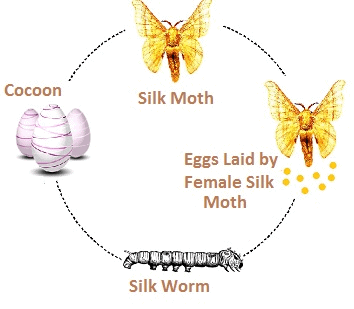Fibre to Fabric Class 7 Notes Science
| Table of contents |

|
| What is Fibre? |

|
| What are the Types of Fibre? |

|
| What is Wool? |

|
| What is Silk? |

|
| Frequently Asked Questions |

|
What is Fibre?
What is Fibre?
Fibre is a thread-like structure that is spun into ropes, clothes, and strings.
- The finer part of the thread is referred to as fibre.
- Fabrics are made from fibres obtained from natural or artificial sources. Example: rayon, nylon, polyester, etc.
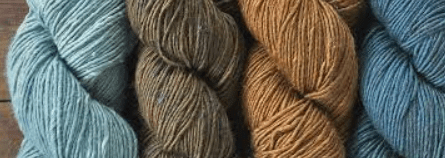
What are the Types of Fibre?
There are two types of fibres – One is natural fibres which are obtained from natural sources, and other is synthetic fibres which are man-made.
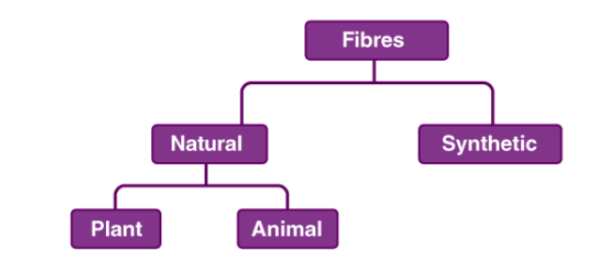
Natural fibres:
The fibres which are obtained from plants and animals are called natural fibres. Examples: cotton, jute, silk, wool.
- Plant Fibre: Cotton and jute are plant fibre.
- Animal fibre: Silk and wool are animal fibre.
Synthetic fibre:
The fibre which is synthesized in the industry from simple chemicals obtained from petroleum is called synthetic fibre. Examples: Nylon, Acrylic, Polyester.
What is Wool?
Wool is the textile fibre obtained from sheep and other animals.
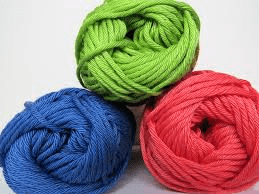
- We get wool from the hair of the sheep, goat, rabbit, yak, and camel.
- Wool is used for making warm clothes, such as sweaters, caps, shawls, gloves, and blankets, etc. Wool is also used in making carpets and upholstery.
Animals that yield Wool
- The wool comes from sheep, goats, yak, and other animals. These wool-yielding animals bear hair on their body because hair keeps them warm, and wool is derived from these hairy fibres.
- Wool is used to making various wool fabrics like woollen clothes, carpets, woollen sweaters, saddle cloths, etc.

From Fibres to Wool
Rearing: It is a breeding process, feeding, and providing medical care to sheep. These animals are kept since they produce valuable products for human beings.
Breeding: Some particular breeds of sheep are specially chosen to give birth to sheep which have only soft under hair. This process of selecting parents for obtaining special characters in their offspring is termed ‘selective breeding.’
Processing Fibres into Wool
The skin of the sheep is hairy, having two types of fibres forming its fleece:
(i) the coarse beard hair
(ii) the fine soft under-hair near the skin is the fleece.
This fleece is the primary source of fibres of wool.
Making fibre into wool follows a series of processes: Shearing, → Scouring → Sorting → Dyeing → Straightening, Rolling, and Combing.
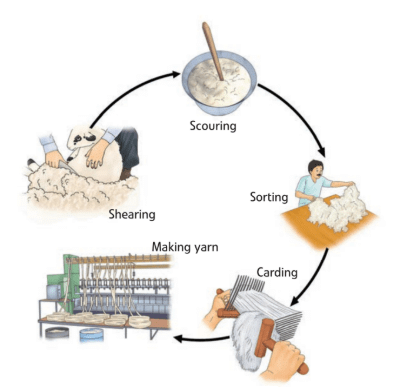
Occupational HazardsSometimes the sorters get infected by a bacterium, anthrax, which causes a fatal blood disease called sorter’s disease.
What is Silk?
Silk is a natural protein fibre obtained from silkworm and can be used as a textile fibre.
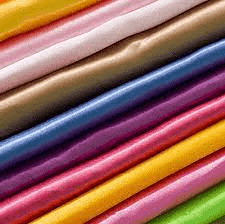 Silk Clothes
Silk Clothes
- Different types of silkworms produce various kinds of silk.
- It can be differentiated based on lustre and texture. Few examples are Kosa, tassar, mooga, etc. Various types of silk moths produce them. One of the common types is the mulberry silk moth.
Life History of Silk Moth
From Cocoon to Silk
- The rearing of silkworms to produce raw silk is called sericulture.
- In this process, silkworms are reared at appropriate temperatures and humidity to get silk threads from cocoons.
Processing Silk
- Cocoons are collected and left under the sun or boiled for separating the silk fibres.
- After that reeling of silk is done, the process of unwinding silk from a cocoon.
- Then, the spinning of silk fibres into threads is done.
- The silk threads obtained are woven into desired clothes.
Frequently Asked Questions
Q.1. What is fibre? How many different types of fabrics are there?
Ans: Fibre is defined as a natural material, available as a raw in the form of the tiny, thread-like strands, which are converted into the yarn.
Fibres are classified into two types:
- Natural Fibres – They are natural fibres, which are obtained from both plants and animals. Examples of Natural Fibre are silk, wool, and cotton.
- Synthetic Fibres — They are man-made fibres, which are produced artificially within the industries. They are also called artificial or man-made Fibers. Example of Synthetic Fibres is Nylon, Rayon, etc.
Q.2. List the steps involved in the preparation of fabric
Ans: The steps involved in the preparation of fabrics are:
- Obtaining fibre.
- Preparation of yarn from fibres by spinning.
- When two sets of yarn are involved, yarns are woven on looms to make fabric. When a single yarn is used, the fabric is prepared by knitting.
Q.3. What is meant by fibre and fabric? Describe the process of making fabrics from fibre.
Ans:
Fibre: A very thin, thread like strand from which cloth is made is called fibre.
Fabric: Fabric means a woven material resembling woven cloth. Fabric is made up of yarns.
Making Fabric: The two main processes used for making fabrics are knitting and weaving.
- Knitting: The process of making fabric by forming a series of connected loops of yarn is called knitting. This process is used for making sweaters, woollen caps, gloves, etc.
- Weaving: The process of making fabric by crossing two sets of yarns over and under each other is called weaving. This process is used for making shirts, trousers, T-shirts, etc.
|
26 videos|32 docs|9 tests
|
FAQs on Fibre to Fabric Class 7 Notes Science
| 1. What is the difference between natural fibers and synthetic fibers? |  |
| 2. How is silk produced? |  |
| 3. What are the different types of wool? |  |
| 4. How is fiber converted into fabric? |  |
| 5. What are the benefits of using natural fibers in clothing? |  |
|
26 videos|32 docs|9 tests
|

|
Explore Courses for Class 6 exam
|

|

